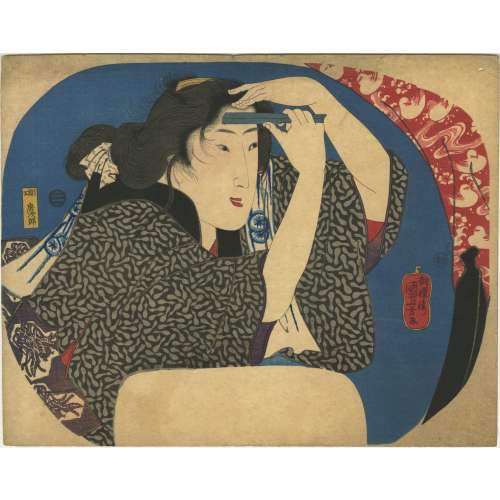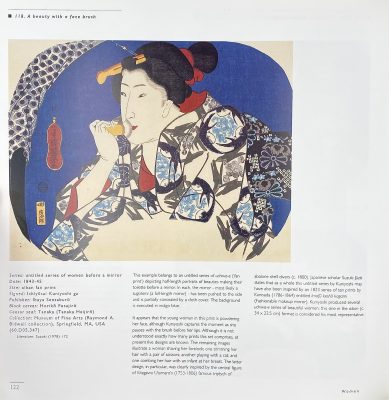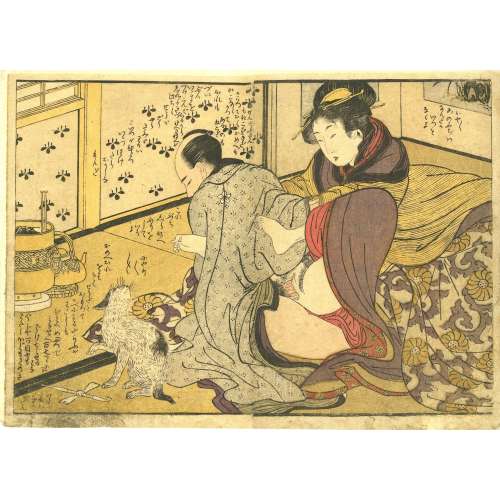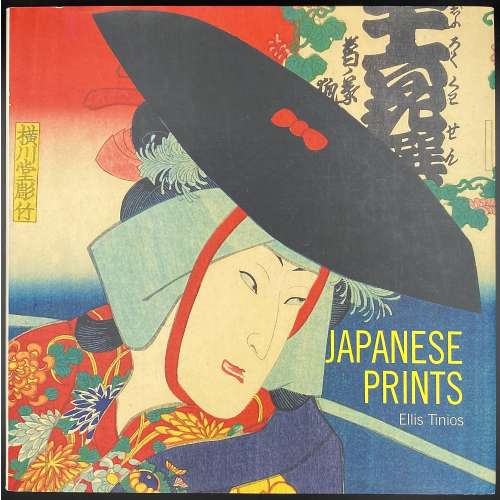Artist (character): Utagawa Kunisada [歌川 国貞] a.k.a. Utagawa Toyokuni III [三代歌川豊国] (Japanese, 1786 – 1865).
Artist (landscape):
Utagawa Kunihisa II [歌川国久] (Japanese, 1832 – 1981), a.k.a. Katsuda Hisatarō, Ichiunsai, Ritchōrō, Toyonobu, Yōryūsai, Yōsai.
Block carver: Matsushima Masakichi (Japanese, fl. c. 1847-65); seal: [松嶋彫政] – Matsushima Hori Masa (Frieze, 2009: 142)
Publisher:
Iseya Magobei [伊勢屋孫兵衛] (Japanese, fl. c. 1794 – 1868).
Signed: By the brush of Toyokuni at the age of 78 [七十八歳豊国筆] (
Nanajūhachi-sai Toyokuni hitsu) – in a red toshidama cartouche (left).
Signed: Landscape by Kunihisa [景色 国久画] (
Keshiki Kunihisa ga) (right).
Actor:
Nakamura Shikan IV [中村芝翫] (Japanese, 1831 – 1899); other names: Nakamura Fukusuke I, Nakamura Masanosuke I, Nakamura Komasaburō, Nakamura Tamatarō I.
Combined date seal and kiwame censor seal: [亥極] – Bunkyū 3 (1863)
Tasogare (literally,
twilight] [たそがれ] is a character in the novel Rustic Genji and a role in various kabuki plays. Fake Murasaki’s Rustic Genji [偐紫田舎源氏] (
Nise Murasaki inaka Genji) is a literary parody written by
Ryutei Tanehiko [柳亭種彦] (Japanese, 1783 – 1842).
According to
Horst Graebner, this must be a
mitate print because there was no known performance of this play in 1863.
 Sano Jirōzaemon [佐野次郎左衛門] – provincial commoner who killed a famous Yoshiwara courtesan named ManjiyaYatsuhashi [万字屋 八ツ橋] (on the second sheet of the pair):
Sano Jirōzaemon [佐野次郎左衛門] – provincial commoner who killed a famous Yoshiwara courtesan named ManjiyaYatsuhashi [万字屋 八ツ橋] (on the second sheet of the pair):


 One more example can be seen at the two upper images in Waseda University Cultural Resources Database, № 006-2707:
One more example can be seen at the two upper images in Waseda University Cultural Resources Database, № 006-2707:







 As noted by Horst Graebner, the gentleman also resembles the character on another Kunisada's actor print, published in 1852 (Waseda University Cultural Resources Database №
As noted by Horst Graebner, the gentleman also resembles the character on another Kunisada's actor print, published in 1852 (Waseda University Cultural Resources Database № 










